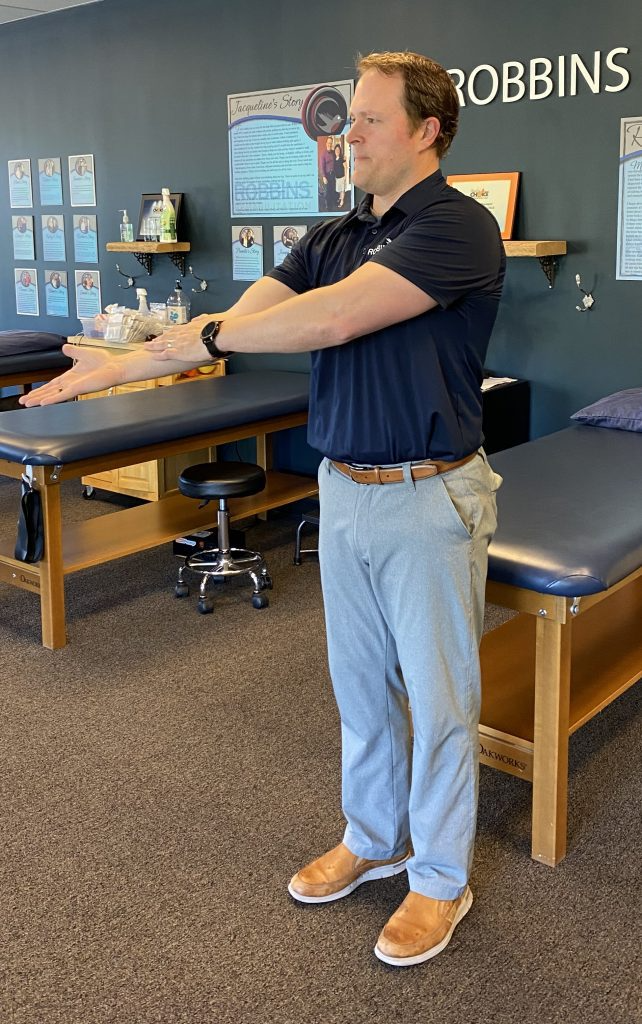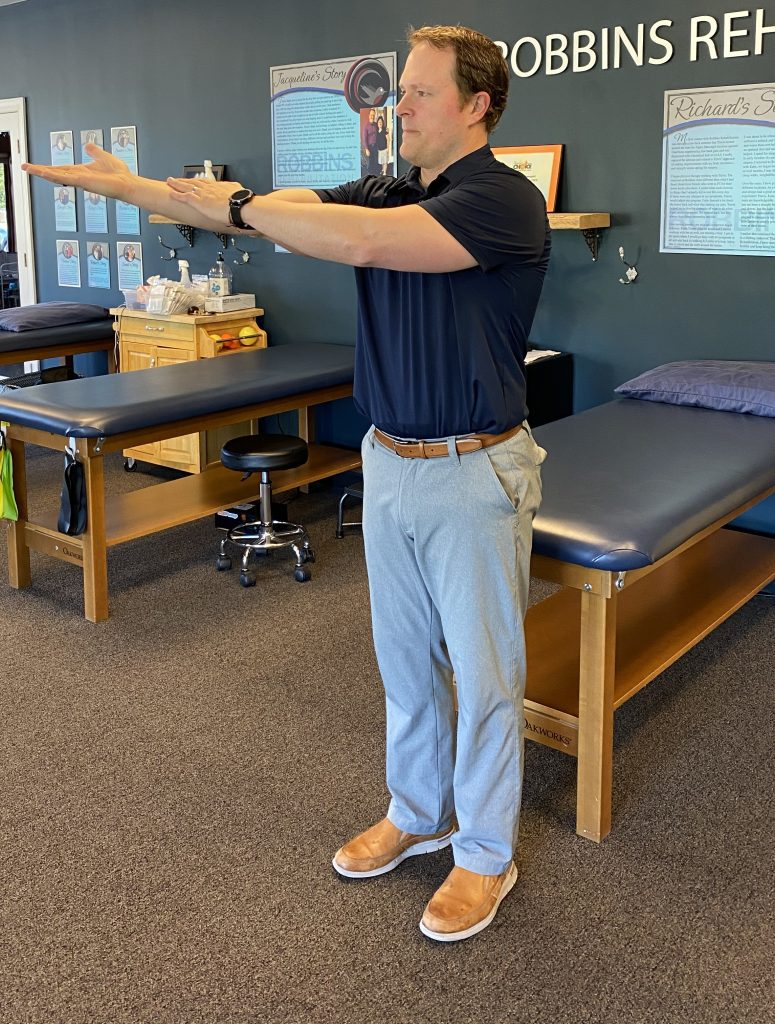During a physical therapy examination, your therapist will perform tests to rule in or rule out causes of your pain, no matter what body part is bothering you. There are dozens of shoulder special tests, but here are a few that you can perform on yourself at home.
Watch this video showing the 3 self tests you can do at home to discover the cause of your shoulder pain.
Speeds Test
You can perform this test either in a standing or sitting position. Put your arm straight out to 90* of shoulder flexion. Start with your arm in supination (palm facing the sky) and with your unaffected arm, push down and try to resist the pressure. Next, keep your arm at 90* of shoulder flexion but your arm will be in pronation (or facing down towards the ground) and repeat applying pressure down.


- Negative test: The test is negative if you don’t have any pain in the testing positions or the pain is not worse with having your arm in pronation (palm facing the ground) versus supination (facing the sky).
- Positive test: The test is positive if your pain is worse with your arm supinated (palm facing the sky) compared to your arm pronated (palm facing the ground)
- What does a positive test mean?
- The test is considered a positive test for possible bicep tendonitis or a SLAP tear. You will experience an increase in pain with load applied while your arm is supinated compared to when it is pronated. You may still have pain with both positions, but the severity will be less with pronation.
Empty Can Test
You can perform this test either in a standing or sitting position. Put your affected arm at 90* of shoulder flexion and then move your arm to about 30* of abduction (or away from your body). Holding your arm in that position, fully internally rotate your shoulder (so your thumb is pointing down as if you were about to empty a can). With your unaffected arm apply downward pressure on your forearm.


- Negative test: The test is negative if you don’t have any pain or weakness with downward pressure.
- Positive test: The test is positive if you have significant pain or weakness in testing position or with downward pressure
- What does a positive test mean?
- The test is considered a positive test for possible supraspinatus tendon irritation or injury.
O’Brien’s test
You can perform this test either in a standing or sitting position. Put your affected arm at 90* of shoulder flexion and then move your arm to about 30* of abduction (or away from your body). Holding your arm in that position, fully internally rotate your shoulder (so your thumb is pointing down as if you were about to empty a can). With your unaffected arm apply downward pressure on your forearm.
- Negative test: The test is negative if you don’t have any pain or weakness with downward pressure.
- Positive test: The test is positive if you have significant pain or weakness in testing position or with downward pressure
- What does a positive test mean?
- The test is considered a positive test for possible supraspinatus tendon irritation or injury.


Stop guessing at what is causing your pain and get some answers. Call our free screen hotline at 610-839-8764 and schedule your free screen today.


